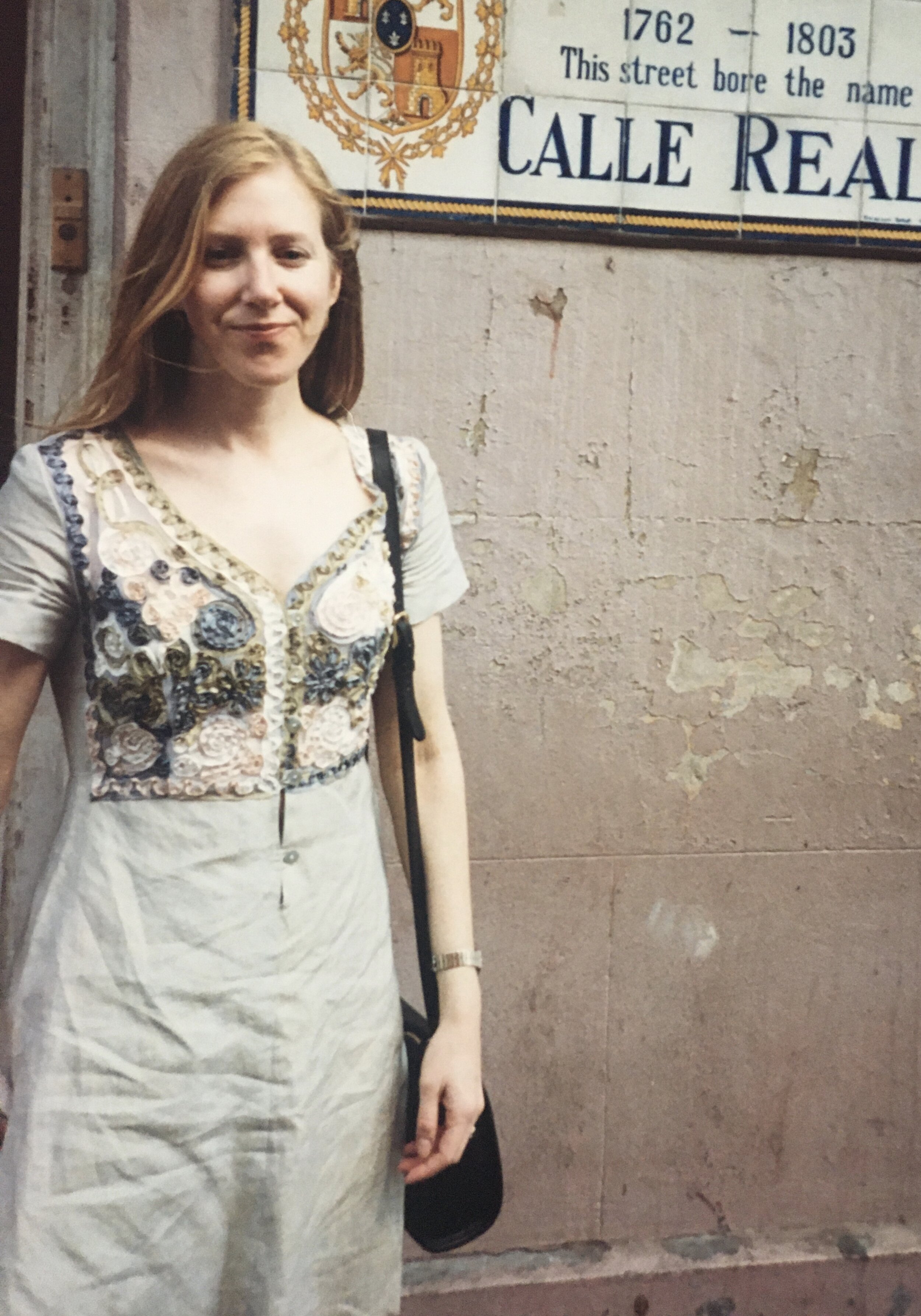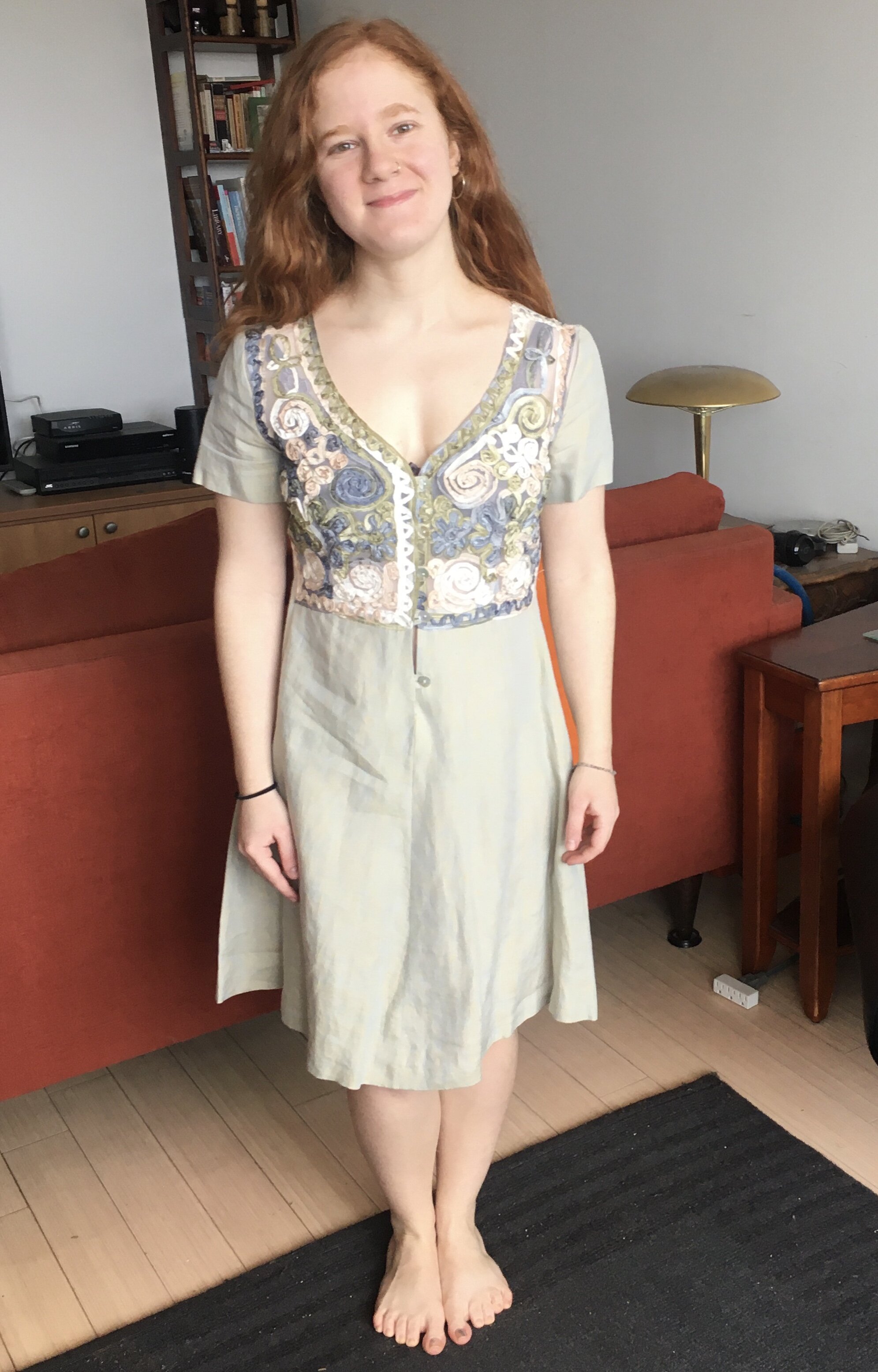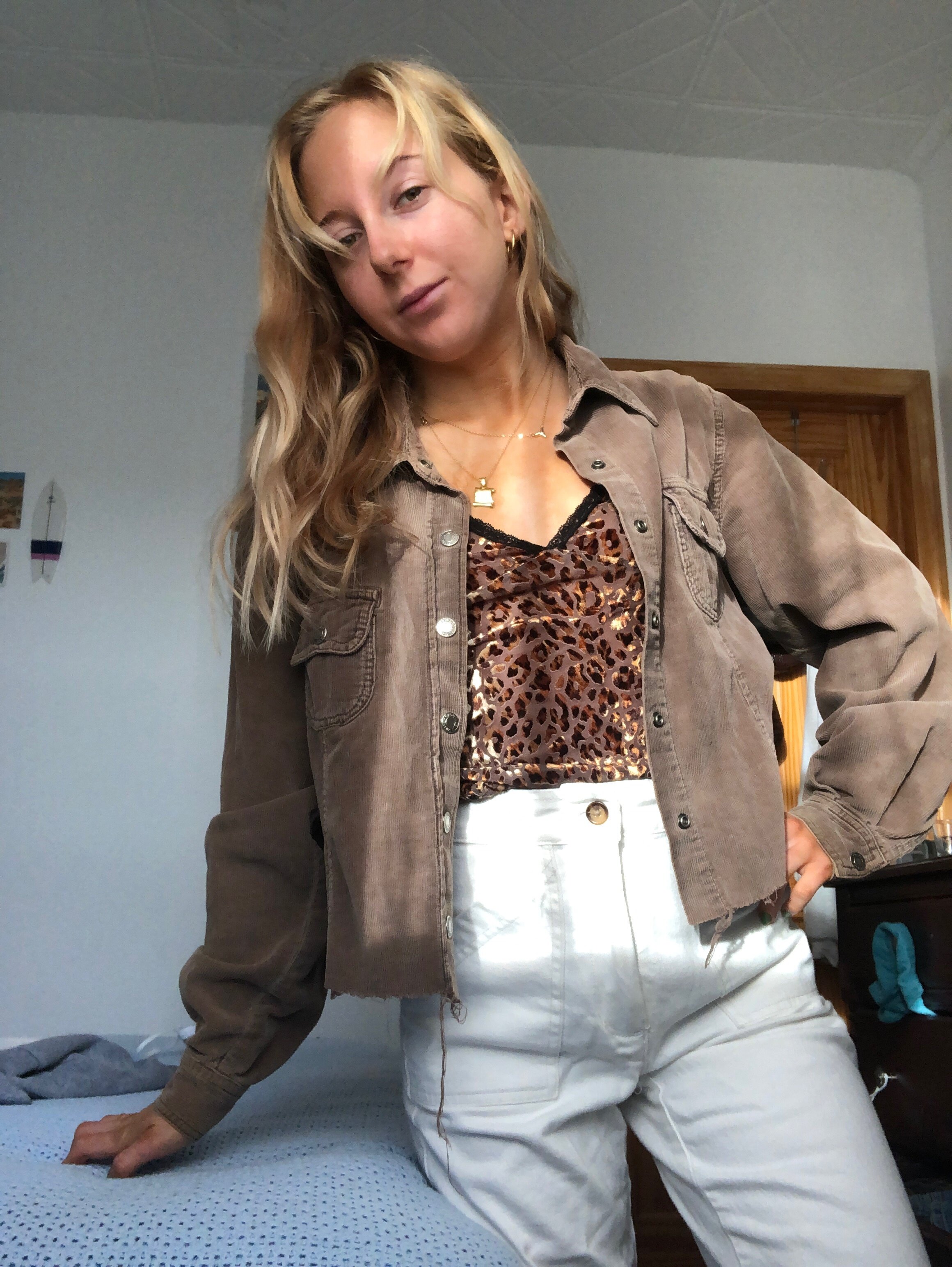One Heartbeat Later: A Mother’s Clothes as Memory-Keepers
Nathalie fashioning her own look from her mother’s silk scarf.
Recently, I decided to go through my clothes closet and part with items that I’ve had for over two decades. This effort was particularly meaningful because, in addition to parting with styles that no longer suited me, I was parting with clothes imbued with a sense of time, place, and people. They held strong memories going back to my life before my twin daughters were born. I did not see this as purging but rather as shedding layers of an evolving identity.
The definition of identity among scholars is inconsistent, as Lennon, Johnson, and Rudd note in their book Social Psychology of Dress. The authors propose “identity as an organized set of characteristics that express the various aspects of who you are (i.e., your self).” [1] It’s this definition of identity I’ll use to reflect on my experience with fashion and motherhood.
Before I was a mother, my primary identity was as a working woman in a male-dominated industry. My dress reflected the conservative but stylish uniform expected of me. I enjoyed shopping for clothes and I had enough disposable income to follow the whims of fashion—at least those that were acceptable to my employer. I identified with the clothing I wore but not with the role I played in my work environment. Clothing helped bridge this disconnect. If I made the effort to dress the part, maybe I could play it convincingly? This worked well for long enough that I thought this role was my fate and imagined returning to it after I gave birth.
During what was supposed to be a routine prenatal exam in my 32nd week, my doctor, visibly unsettled, ordered me to go home, pack an overnight bag, and immediately go to the hospital. Two days later my daughters were born, eight weeks early. I had to quit my job, spend the next two months commuting back and forth to the NICU (neonatal intensive care unit) at the hospital, and the five months after that quarantined at home with two tiny, vulnerable preemies. I would not be returning to work. I was in a brand-new situation as a stay-at-home mom where I had no time or reason to think about clothes. Yet clothes and fashion had always been important in projecting who I was.
During this time, I felt unmoored. This was not the bliss of new motherhood that I grew up imagining. The question of whether this new role of motherhood would subsume all that made me feel like me had not occurred to me. At the time, I avoided self-reflection. I had trouble identifying with my new role and I couldn’t dress the part as I had done in the past. I missed the armor that clothing provides. Now I can see clearly that I was too overwhelmed to acknowledge the other characteristics that made up my identity.
Eventually, the three of us emerged from quarantine and ventured out to playgrounds, the local library branch, and occasionally a coffee shop. In September 2001, that cloudless Tuesday morning was a relief after days of being cooped up with my almost two-year-old twin daughters. I turned on the television for their morning children’s programming to occupy them until we were ready to go outside. Instead of their favorite characters, I saw smoke billowing out of a building. In a daze, my husband, home for the day, and I followed the news while our daughters wondered why we were crying and did the best they could to occupy themselves. To maintain some normalcy, we went out to a playground and while our girls played, we commiserated with other parents. Later that evening, I connected with friends from my working life so we could check in on each other. We knew that at least one of our former colleagues was missing. I shivered at the memory of working on the 102nd floor of Two World Trade Center, my first job out of college.
“Clothes could not help me and I felt out of place. Was there really a mom’s dress code that I couldn’t follow? ”
It was around this time that I started taking my daughters to Mommy and Me classes. I wore my casual clothes from my former life and started thinking about fashion again, especially after I noticed the other stylishly dressed moms. I attempted to spruce up my wardrobe of dated casual clothes with a few contemporary items, hoping this would serve as the costume of a new mother, something I needed as I battled with a case of imposter syndrome. How would I convince the stylish moms that I was one of them and gain their camaraderie without a new look? The moms in these classes appeared to be fully attired in high-end casual styles, more than a cut above the classic mid-range brands that I consumed. Clothes could not help me and I felt out of place. Was there really a mom’s dress code that I couldn’t follow?
I observed my daughters’ connection to dress while I questioned my own. They were uninhibited little girls who rejoiced in playing dress up. The big silk scarves that were part of my work uniform became their costumes. I marveled at their ability to fashion themselves and at their determination to create a look that they were convinced was right for them. I began to see my daughters’ identities manifested through their choice of dress.
What felt like a heartbeat later, I enrolled my daughters in public elementary school. I still hadn’t acquired the confident mom identity that I was seeking but I was able to find the familiar again in clothes that I once enjoyed wearing. I soon discovered that things were different in this setting. I met a diverse community of parents committed to their children’s education. No one was sizing me up for my clothes or for the insecurities of motherhood that I wore on my five-seasons-ago sleeve. These parents were paying attention to my involvement in matters affecting our children.
When my daughters were in first grade I had the hours of 9am-3pm to myself. I used some of my free time volunteering at my daughters’ school. One of the volunteer opportunities I took on during this time was shelving books and copy cataloguing new books in the school library. I sheepishly revealed to the mom who led the library committee that I was interested in returning to school for a master’s degree in library science. Without pause, this mom led me to the school librarian for an informational interview. The librarian was enrolled in a program herself. Before I had time for self-doubt, I applied and was accepted to the same school the librarian attended. I was opening up new facets of my identity and once again found comfort in the clothes that I owned. My insecurities stemming from the responsibilities of motherhood and how lost I was in that one part of my identity had nothing to do with my clothes or my fashion sense.
My daughters are now twenty-one years old, a milestone age. That may explain why I am feeling the desire for a sartorial renewal. I am entering a new phase, a mother of adult daughters and all that implies. I considered some of the clothes I was giving away too youthful for me, flattered that my daughters selected a few to keep for their own.
Clothes, while in my possession, are keepers of moments in my life. My attachments to them change amid the passage of time and my co-existing and evolving identities. The clothes are tangible while my memories of myself wearing them are not. When I see my daughters wearing old favorites I see the clothes anew, now representing their evolving identities. I allow myself to let go of old memories and see the clothes—and my daughters—in the present.
NOTES
[1] Lennon, S.J., Johnson, K.P., & Rudd, N.A. (2017). Dress and Identity. In Social Psychology of Dress (pp. 235–263). New York: Fairchild Books






